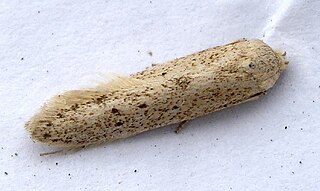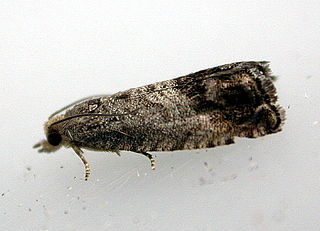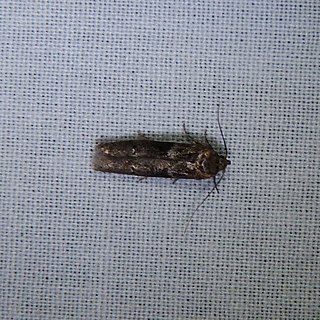| Blastobasis legrandi | |
|---|---|
| Scientific classification | |
| Kingdom: | Animalia |
| Clade: | Euarthropoda |
| Class: | Insecta |
| Order: | Lepidoptera |
| Family: | Blastobasidae |
| Genus: | Blastobasis |
| Species: | B. legrandi |
| Binomial name | |
| Blastobasis legrandi Adamski, 1995 | |
Blastobasis legrandi is a moth in the family Blastobasidae. It was described by Adamski in 1995. It is found on the Seychelles. [1]

Moths comprise a group of insects related to butterflies, belonging to the order Lepidoptera. Most lepidopterans are moths, and there are thought to be approximately 160,000 species of moth, many of which have yet to be described. Most species of moth are nocturnal, but there are also crepuscular and diurnal species.

The Blastobasidae are a family of moths in the superfamily Gelechioidea. Its species can be found almost anywhere in the world, though in some places they are not native but introduced by humans. In some arrangements, these moths are included in the case-bearer family (Coleophoridae) as subfamily Blastobasinae. The Symmocidae are sometimes included in the Blastobasidae as subfamily or tribe.
David Adamski is an American entomologist working as a research associate at the Smithsonian Institution's National Museum of Natural History and a support scientist in the Systematic Entomology Laboratory (SEL), United States Department of Agriculture in Washington, D.C. He obtained a PhD degree from the Mississippi State University, Department of Entomology in 1987 after defending a dissertation, titled "The Morphology and evolution of North American Blastobasidae (Lepidoptera:Gelechioidea)". His research interests focus on alpha taxonomy, life histories and morphology of moths. Over the years, Adamski produced more than 80 scholarly publications, some in collaboration, shedding light on discernible groups of Lepidoptera including Gelechioidea, Tortricoidea, Pyralidoidea, and Noctuoidea. He studied divergent taxa within the Auchenorrhyncha and Sternorrhyncha, and Phytophagous Acari, as well as Gelechioidea and Blastobasidae. Adamski is a member of the Entomological Society of Washington.



